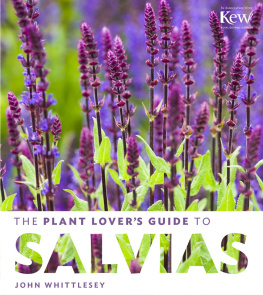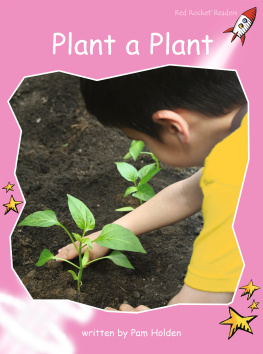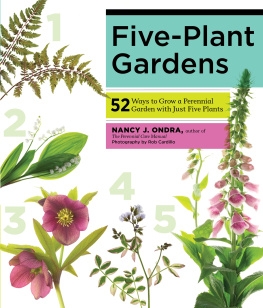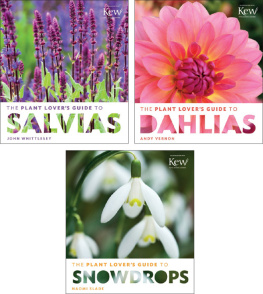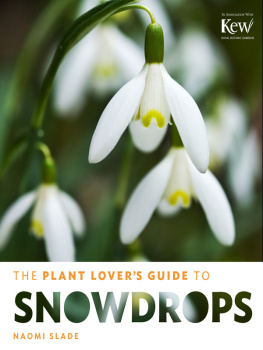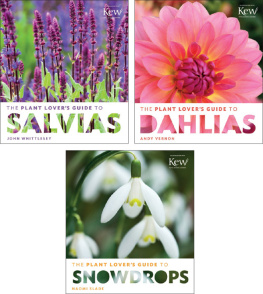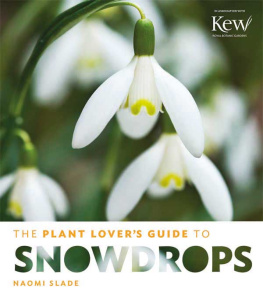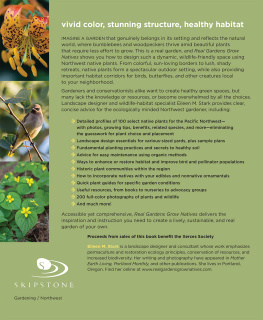
THE PLANT LOVERS GUIDE TO
SALVIAS
JOHN WHITTLESEY
TIMBER PRESS
PORTLAND LONDON
Front cover: Caradonna
Spine: Amethyst
Title page: Salvia leucantha
Contents page: Salvia viridis
Copyright 2014 by John Whittlesey. All rights reserved.
Published in 2014 by Timber Press, Inc.
The Haseltine Building
133 S.W. Second Avenue, Suite 450
Portland, Oregon 97204-3527
6a Lonsdale Road
London NW6 6RD
For details on other Timber Press books and to sign up for our newsletters, please visit our websites, timberpress.com and timberpress.co.uk.
Library of Congress Cataloging-in-Publication Data
Whittlesey, John, 1953
The plant lovers guide to salvias/John Whittlesey. First edition.
pages cm
Other title: Salvias
Includes index.
ISBN 978-1-60469-419-2
1. Salvia. 2. Gardening. I. Title. II. Title: Salvias.
SB413.S22W48 2014
635dc23
2013034038
A catalog record for this book is also available from the British Library.
Mention of trademark, proprietary product, or vendor does not constitute a guarantee or warranty of the product by the publisher or author and does not imply its approval to the exclusion of other products or vendors.
Book and cover design by Laken Wright
Layout and composition by Ben Patterson
Printed in China
CONTENTS
WHY I LOVE SALVIAS
Some people grow salvias for their showy flowers. Others grow them for their textured and often fragrant foliage.
I grow salvias not only for their intrinsic value as beautiful plants in a landscape, but also for the added wildlife they attract that enlivens my garden and my life. Planted strategically throughout my property, salvias create daily opportunities for me to observe hummingbirds, bees, and butterflies.
On summer and fall mornings, the droning buzz of hefty, glossy black carpenter bees greets me when I step out onto my deck at the break of dawn for my first sip of coffee. These bees begin their day early, drinking nectar from a container-grown Salvia Wendys Wish. It is barely light and I am only aware of the bees because of their urgent, persistent buzzing.
Later, when I step outside my front door to begin the days work, a rigidly straight path of decomposed granite, confined by two-by-four edging, leads me from the front door to the gravel parking area where my truck awaits. Midway down the walk, a chest-high Salvia clevelandii (Cleveland sage) has eased itself into the path, leaning so that anyone walking there is gently encouraged to slow and step around. The placement of this particular salvia is perfect.
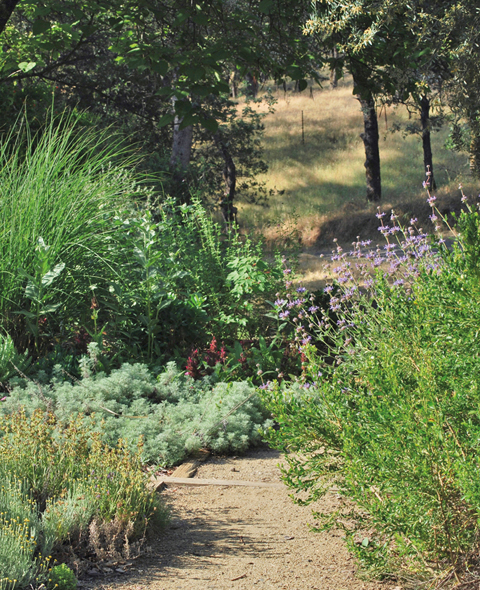
The path from my front garden in late spring, with Salvia clevelandii leaning across the way.
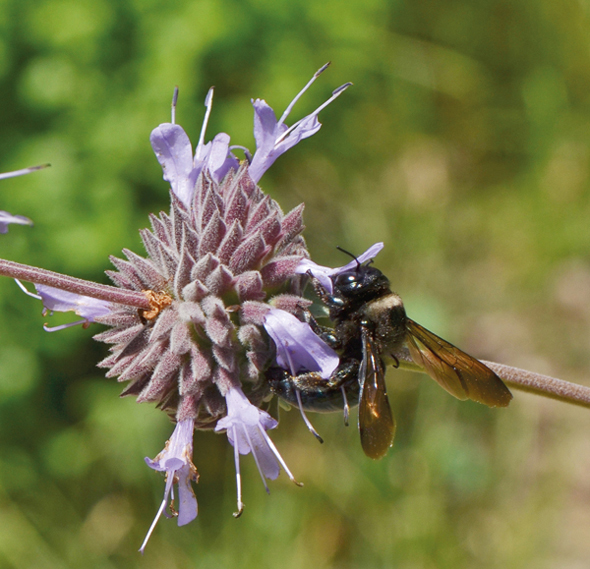
A glossy black male carpenter bee nectaring on the flowers of Salvia clevelandii.
I have started down this path many mornings to begin the day, only to pause and watch a hummingbird moving unhurriedly, sipping nectar from the tightly bunched whorls of blue flowers spaced along the slender woody stems, or to wait for the pipevine swallowtail butterfly, its blue-black coloring shimmering in the morning light, until it has flitted off after getting its fill of nectar. On days when there are no hummingbirds or butterflies to distract, I notice the loud buzzing of carpenter bees or bumblebees as they move hurriedly between flowers to gather pollen or nectar.
Even when not in flower, the Cleveland sage gives me reason to have planted it along a pathway. The stiff, gray-green leaves treat me and other passersby to a sharp, yet pleasant fragrance of crisp camphor overlaid with a blend of resinous desert scentsa fragrance that appeals to many, me included.
Across from the Cleveland sage, low-growing Salvia lavandulifolia (Spanish sage) puddles out over the wood edging onto the gravel path. For a month in midspring, this tidy plant with its narrow silvery gray foliage is topped by 8-inch (3-cm) spikes of large lavender-blue flowers. Nestled against the fine foliage of the intensely silver Santolinachamaecyparissus (lavender cotton) with Eriogonum umbellatum (sulfur buckwheat) behind, this pleasing trio looks attractive year-round, whether in flower or not, a subtle blend of silver, gray, and light green.
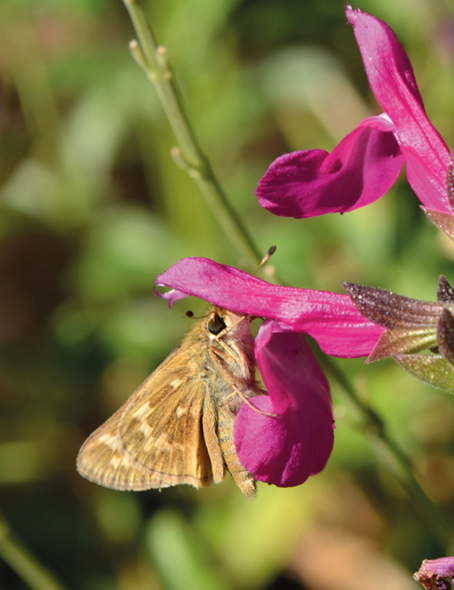
Salvia greggii with fiery skipper.
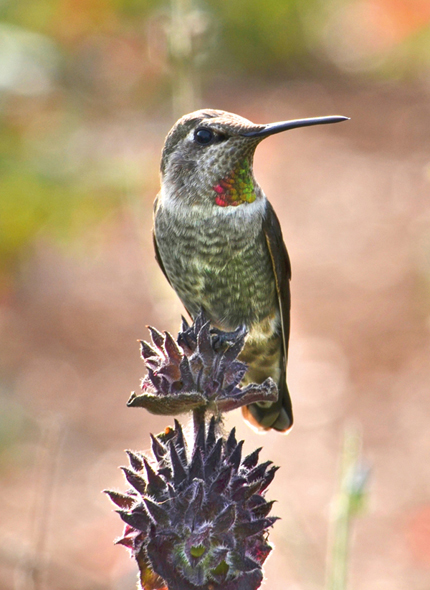
Calm and observant, an Annas hummingbird rests on a dried whorl of Salvia clevelandii.
The path I am following divides an area that is part meadow, part lawn. Edging this area is an informal hedge of Salvia microphylla San Carlos Festival, selected for this location because of its compact habit, substantive pebbled foliage, and short stems of colorful rose-red flowers. These cover the plants beginning in late spring, when the first flush of flowers opens, and continue sporadically through summer and fall. Behind this grouping is a lone plant of S. heldreichiana that has made a low mound of divided, gray-green leaves. The long, slender stems with deep lavender-blue flowers rise above the surrounding plantings, beckoning more pipevine swallowtails, bees, and hummingbirds.
Just before the path reaches the steps that lead down to the parking area, Salvia spathacea (hummingbird sage) has colonized in the partial shade cast by a nearby olive tree and is nestled up against silver-plumed Miscanthus sinensis Graziella. The deep olive green leaves of hummingbird sage are large and textured, forming a loose mat only a few inches high. In midspring the stout, vertical flowering stems rise up tightly packed with crimson-red flowers peeking through the dark calyces. Like Cleveland sage, hummingbird sage gives pedestrians reason to pause, as if waiting for the crosswalk light to change to green, until the hummingbird has finished its visitation.

Lavender-blue, low-growing Salvia lavandulifolia eases out into my front walk and interweaves with a neighboring santolina.
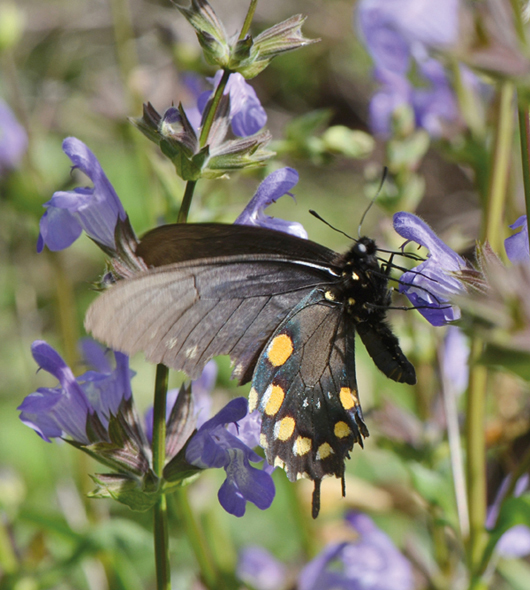
A pipevine swallowtail butterfly sips nectar from a large flower of Salvia heldreichiana.
These scenes that play out in the garden slow me down, stop me, make me aware of the active life in the garden, not unlike the ringing of a monastery bell as a reminder to be present. To grow salvias is to be awakened by all the senses. The hummingbird or the delicate flight of a butterfly brings me into the present, slowing me down on a morning when scattered thoughts are of the day ahead as I head to my truck. The sharp scent of Cleveland sage fills the air and the nose for an instant, just long enough to bring an awakened awareness to where I amin that moment. These brief scenes encountered along a path of carefully chosen plants are why I garden, and why I plant salvias in my garden and in the gardens I design.
Next page
